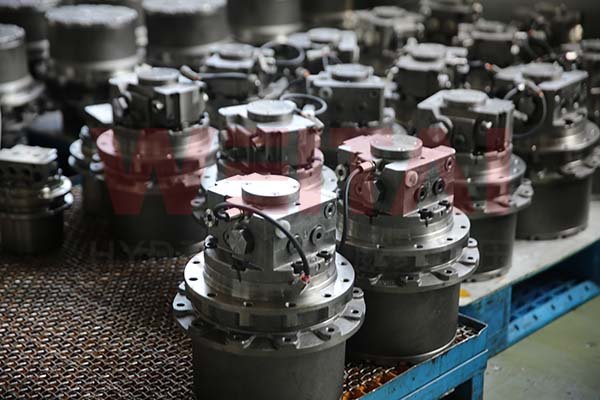Current Status of the Heavy Machinery Industry
Heavy machinery occupies a pivotal position in the national economy. It is a basic equipment industry that provides technical equipment for my country’s energy development, raw material production, transportation and other departments, and national defense construction. It is closely related to many important fields.

At present, the global heavy machinery market continues to expand. As global infrastructure construction and resource development continue to advance, especially in emerging markets and developing countries, the demand for heavy machinery continues to grow. As the world’s largest producer and consumer of heavy machinery, China’s market size and growth momentum are particularly significant. In recent years, China’s heavy machinery industry has maintained rapid growth for many consecutive years and has become one of the important pillar industries of the national economy.
In terms of market competition, the heavy machinery industry is highly competitive. Well-known domestic and foreign brands such as Caterpillar, Komatsu, and Hitachi Construction Machinery dominate the market. At the same time, domestic brands such as WEITAI, Sany Heavy Industry, Xugong Machinery, and Zoomlion are gradually emerging in the international market. Competition is mainly reflected in technological competition. Enterprises with advanced technology and innovation capabilities can launch higher-performance and more reliable products to meet market demand. As market competition intensifies, market concentration gradually increases.
From the perspective of development trends, the heavy machinery industry is gradually realizing intelligent transformation. Intelligent heavy machinery such as intelligent excavators and driverless bulldozers have gradually been put into the market, improving work efficiency and safety. At the same time, the advancement of environmental protection and energy-saving policies has prompted the heavy machinery industry to develop in a green direction. Enterprises actively adopt clean energy, develop energy-saving technologies, and reduce energy consumption and emissions. In addition, the heavy machinery industry will also develop in a diversified direction and expand into emerging fields such as environmental protection and new energy.
Discussion on Future Development Directions
1. Electrification trend
With the increasing pressure on environmental protection, electric heavy machinery has gradually become a development trend. WEITAI and other companies have actively carried out electrification transformation and achieved remarkable results. For example, WEITAI has launched several electrified products, including electric excavators, electric loaders, etc. Electrified products have the advantage of reducing carbon emissions and reducing fuel costs. Electric heavy machinery can achieve remote monitoring and automatic control, improving work efficiency and safety. In addition, electrification transformation can also enhance the company’s brand image and meet market demand for environmentally friendly products.
2. The rise of hybrid power
Hybrid heavy machinery performs well in solving the pain points of traditional mine trucks, saving fuel, and reducing emissions. Take the heavy-duty mining truck hybrid system developed by Asia Pacific Precision Transmission as an example. This system perfectly solves the shortcomings of traditional fuel mining trucks such as high fuel consumption, high emissions, insufficient dynamic torque response, and poor reliability. It also solves the problems of pure electric mining trucks. problems such as mileage anxiety, high car purchase costs, and poor adaptability. Driven by the national “green mine” strategy, hybrid power systems have gradually become the development trend of future mine trucks. In addition, Jiefang Qingqi Automobile’s predictive hybrid control technology has also achieved good results in the application of long-distance heavy trucks, solving the pain points of hybrid long-distance heavy trucks.
3. Hydraulic technology innovation
Hydraulic technology has the advantages of a large transmission force, high control accuracy, and fast response speed in heavy machinery. For example, hydraulic systems can provide powerful power output and control accuracy for heavy machinery, improve operating efficiency, and reduce energy consumption. At the same time, hydraulic technology has also made breakthroughs in materials and manufacturing processes. New hydraulic materials have higher strength and wear resistance, making hydraulic systems more durable and reliable. However, hydraulic technology also faces some challenges. For example, the transmission efficiency of the system is low, and it has withdrawn from many markets under the current pressure of energy conservation and environmental protection. The reliability of hydraulic transmission is lower than that of mechanical transmission and electrical transmission, which limits its use. The informatization of hydraulic transmission is also difficult to realize, which limits its in-depth development of informatization. To meet these challenges, researchers are actively exploring new solutions and technological breakthroughs, such as researching new materials and processes to improve the working efficiency and service life of hydraulic systems. At the same time, the government and enterprises should also increase their support for the research and development and promotion of hydraulic technology, and promote the sustainable development of hydraulic technology and the expansion of its application fields.

Comprehensive Outlook
The future development of heavy machinery is affected by many factors. On the one hand, changing market demands, increasingly strict environmental protection policies, and rapid technological advancement are driving the development of heavy machinery in a more efficient, intelligent, and environmentally friendly direction. On the other hand, intensified industry competition, fluctuations in raw material prices, and high costs of technology research and development have also brought huge challenges to heavy machinery companies.
From the perspective of electrification trends, although the current market share of electric heavy machinery is relatively small, its development potential is huge. As battery technology continues to advance, the cruising range of electric heavy machinery will continue to increase, charging time will continue to shorten, and costs will gradually decrease. At the same time, the government’s subsidy policy and environmental protection requirements for new energy vehicles will further promote the development of electric heavy machinery.
Hybrid heavy machinery combines the advantages of traditional fuel power and electric power to ensure power performance while reducing fuel consumption and emissions. As hybrid technology continues to mature, its cost will gradually decrease and market competitiveness will continue to increase.
Although hydraulic technology faces some challenges, its application in heavy machinery still has irreplaceable advantages. With the continuous advancement of material science and manufacturing technology, the efficiency and reliability of hydraulic systems will continue to improve, and the level of informatization will also continue to improve. At the same time, the integration of hydraulic technology with other technologies will also bring new opportunities for the development of heavy machinery.

In short, although the future development direction of heavy machinery is full of challenges, electric, hybrid, and hydraulic technologies all have huge potential. We should continue to pay attention to the development of these technologies and provide strong support for the sustainable development of the heavy machinery industry.



